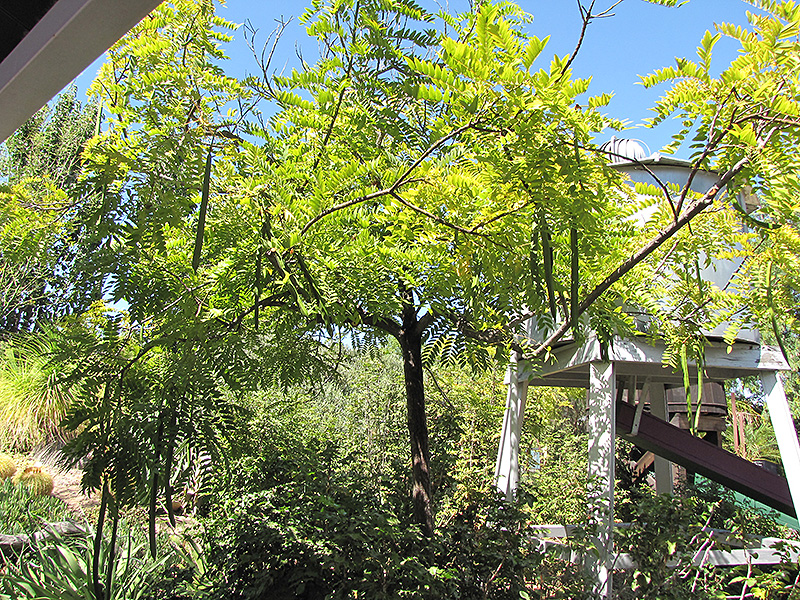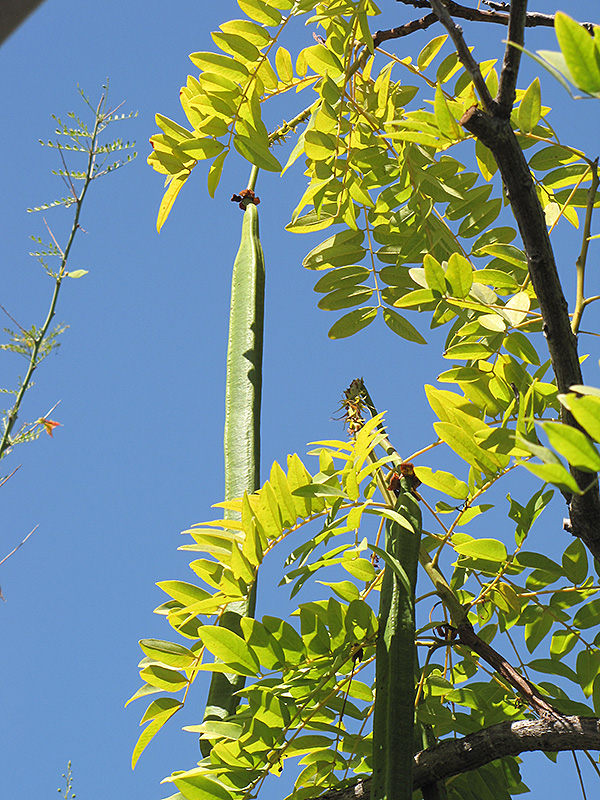Height: 25 feet
Spread: 20 feet
Sunlight:
![]()
![]()
Hardiness Zone: 9a
Description:
A small, open crowned tree with spreading, drooping branches; dark green, semi-evergreen pinnate foliage contrasts stunning clusters of yellow flowers in summer; protect from drying winds; a great low maintenance street tree
Ornamental Features
Gold Medallion Tree features showy corymbs of fragrant yellow cup-shaped flowers at the ends of the branches from early summer to early fall. It has attractive dark green evergreen foliage. The oval pinnately compound leaves are highly ornamental and remain dark green throughout the winter. The fruits are showy lime green pods which fade to black over time, which are carried in abundance from mid fall to late winter.
Landscape Attributes
Gold Medallion Tree is a multi-stemmed evergreen tree with an upright spreading habit of growth. Its average texture blends into the landscape, but can be balanced by one or two finer or coarser trees or shrubs for an effective composition.
This tree will require occasional maintenance and upkeep, and should only be pruned after flowering to avoid removing any of the current season's flowers. It is a good choice for attracting birds, bees and butterflies to your yard. It has no significant negative characteristics.
Gold Medallion Tree is recommended for the following landscape applications;
- Accent
- Shade
- General Garden Use
Planting & Growing
Gold Medallion Tree will grow to be about 25 feet tall at maturity, with a spread of 20 feet. It has a low canopy with a typical clearance of 4 feet from the ground, and is suitable for planting under power lines. It grows at a medium rate, and under ideal conditions can be expected to live for approximately 30 years.
This tree does best in full sun to partial shade. It prefers to grow in average to dry locations, and dislikes excessive moisture. It may require supplemental watering during periods of drought or extended heat. It is not particular as to soil type or pH. It is highly tolerant of urban pollution and will even thrive in inner city environments, and will benefit from being planted in a relatively sheltered location. This species is not originally from North America, and parts of it are known to be toxic to humans and animals, so care should be exercised in planting it around children and pets..



